Infrastructure
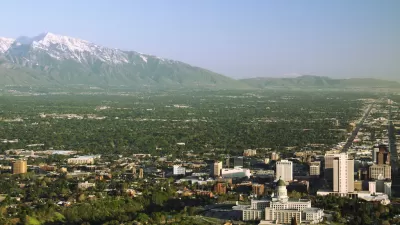
Opinion: Utah Transportation Bill a Step in the Right Direction
A Utah mayor writes in support of state legislation that tasks state agencies with coordinating major transit projects, citing it as a positive step toward accommodating Utah’s explosive growth.

Ohio Pledges $51 Million for Traffic Safety
The state’s department of transportation will invest in a variety of traffic safety projects as traffic fatalities reach their highest level in decades.
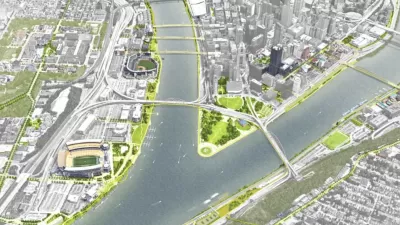
“Completing the Loop” Plan Wins National Award for Excellence in Sustainability
Riverlife and evolveEA were honored by the American Planning Association (APA) for the plan, which outlines a 10-year vision to connect, enhance, and expand Pittsburgh’s network of riverfront parks, trails, and public green spaces.
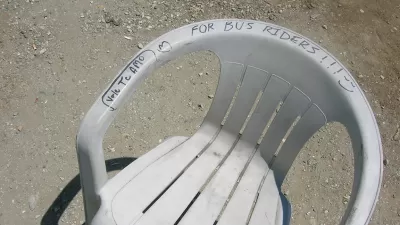
Federal Infrastructure Funding a Rare Opportunity to Improve the Nation’s Bus Shelters
Transit systems faced with decreasing ridership could accommodate access to the most widely available form of transit by building bus shelters. The federal infrastructure bill provides a big opportunity to do so.
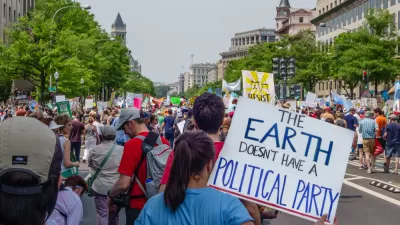
Has the Rug Been Pulled Out From Under Environmentalists?
Robinson Meyer, a climate reporter for The Atlantic, writes about the awkward place American environmentalists find themselves due in part to the war in Europe that has created an international energy crisis and historically high fuel prices at home.
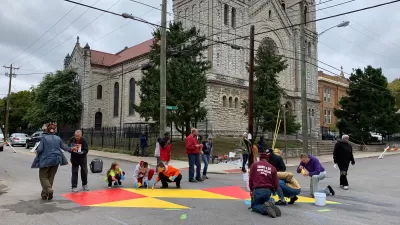
Study: Street Murals Can Prevent Crashes
An analysis of asphalt art around the country indicates that painted intersections and roads can dramatically improve pedestrian safety.
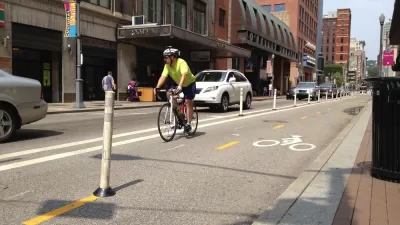
Pittsburgh Plans Pedestrian-Friendly Makeover on Downtown Street
Pittsburgh’s Smithfield Street could gain wider sidewalks, a bike lane, and more green space.
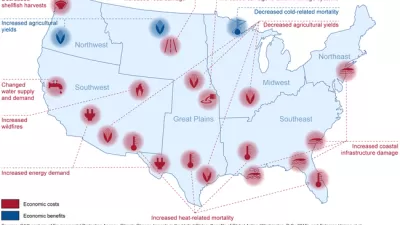
RAISE Proposals Are in; What Will it Mean for Climate Change?
The deadline for the first discretionary program to accept applications since the Infrastructure Investment and Jobs Act was signed into law was April 14, marking the day as one of the most consequential in America’s response to climate change.
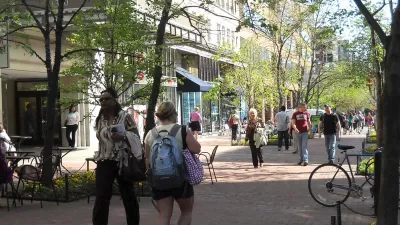
Walkability Scores Don’t Tell the Whole Story
A new report concludes that common ‘walkability’ measures don’t account for many barriers faced by pedestrians, such as environmental factors and policing.
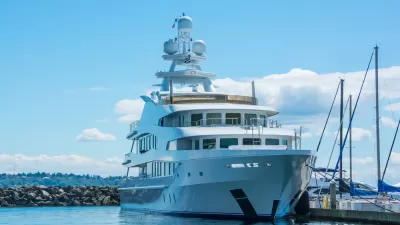
Superyachts Calling the Shots for How Light Rail Gets Built in Seattle
Determinations made by the Coast Guard to accommodate superyachts will affect the price of light rail and other bridge projects in Seattle and environs.

NFL Draft Inspires Proposal to Block Cars From the Las Vegas Strip
The NFL draft shut down the Las Vegas Strip to car traffic. Some people liked the change so much that a new law proposes to permanently block cars from the street. Yes, you read that correctly.
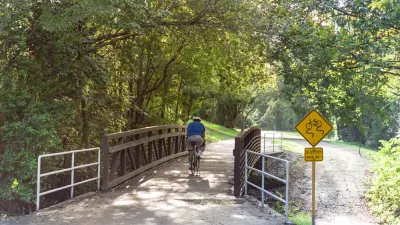
How Houston Is Growing its Bike Infrastructure
The famously car-centric city is investing more than ever in bike infrastructure, with ambitious plans to build 1,800 miles of protected bike lanes and trails.
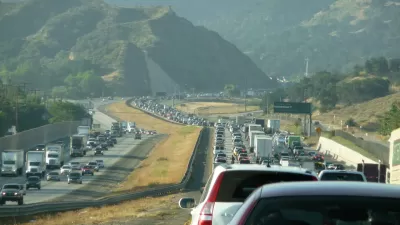
Report: United States Could Cut Transport Emissions by 34 Percent by 2030
The U.S. transportation sector is on track to reduce emissions by 19 percent by the end of the decade, but a new report indicates the public and private sectors could implement policies that would cut emissions by as much as 34 percent.
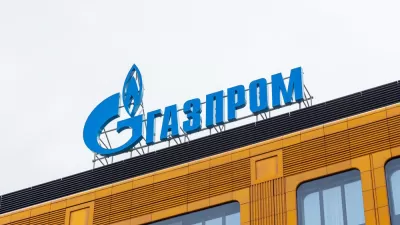
Energy War Comes to the European Union
When President Putin ordered Gazprom to turn off the valve on pipelines carrying Russian gas to Poland and Bulgaria, he effectively expanded the Russia-Ukraine war to the European Union, threatening their economic well-being and way of life.
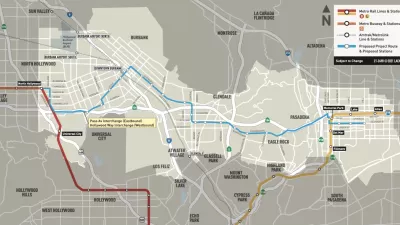
Controversial North Hollywood-Pasadena Bus Rapid Transit Line Approved
A controversial project to connect the San Fernando and San Gabriel valleys by bus rapid transit has final approval. Los Angeles, Glendale, Burbank, and Pasadena will have a new connecting transit line as soon as 2024.
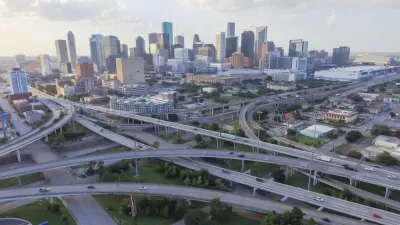
A Freeway Rebellion Rises in the Unlikeliest of States: Texas
“There’s no train, there’s no bus, there’s no anything that supports mass transportation. It doesn’t exist.” -Houston resident Fabian Ramirez.
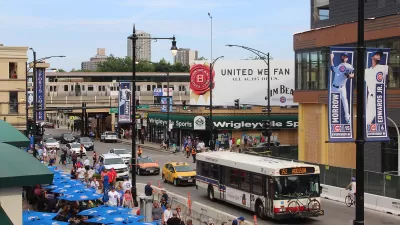
Chicago Plans ‘Better Streets for Buses’
The city of Chicago is taking first steps toward a commitment to better bus service in the design and configuration of the city's streets.
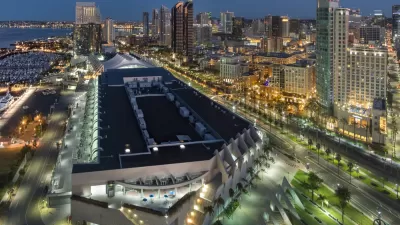
Day One of the National Planning Conference—Reunions, Pandemic Planning, Equity, and VMT
The American Planning Association gathers for its first in-person National Planning Conference since 2019. Planetizen is in attendance, and here is some of what we saw on the first day of the conference.
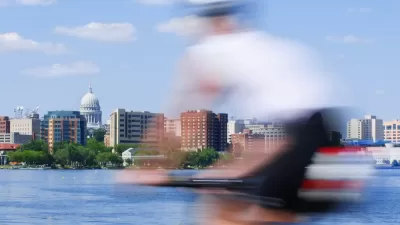
Wisconsin Republicans Block Congestion, Pollution Funds From Bike and Ped Projects
It was always a risk that states would use funding from the federal Infrastructure Investment and Jobs Act to double down on the transportation systems that create congestion and air pollution.
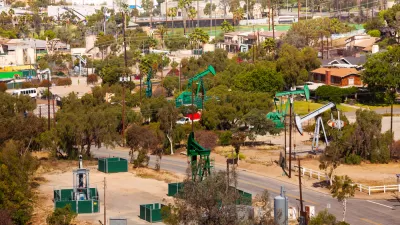
Federal Funding Boosts California Effort To Seal Abandoned Oil Wells
The state’s oil-producing regions are dotted with oil wells that contribute to water and air pollution and threaten public health.
Pagination
Urban Design for Planners 1: Software Tools
This six-course series explores essential urban design concepts using open source software and equips planners with the tools they need to participate fully in the urban design process.
Planning for Universal Design
Learn the tools for implementing Universal Design in planning regulations.
Heyer Gruel & Associates PA
JM Goldson LLC
Custer County Colorado
City of Camden Redevelopment Agency
City of Astoria
Transportation Research & Education Center (TREC) at Portland State University
Jefferson Parish Government
Camden Redevelopment Agency
City of Claremont


































